2017-09-07 By Robbin Laird
On August 23, 2017, the Williams Foundation held a seminar on the future of electronic warfare.
With the introduction of the Growler, this has provided a natural hook into the broader discussion of the evolving payloads, which need to be part of an integrated 21st century combat force.
A number of presentations provided a look at the technology and con-ops of evolving EW capabilities.
These presentations provided the perspectives from industry and from Australian services and the joint perspective.
And a broad brush look at the technologies was provided by an American presenter as well.
What was clear was that this is becoming a vital area for R and D as well as integration into the evolving force structure.
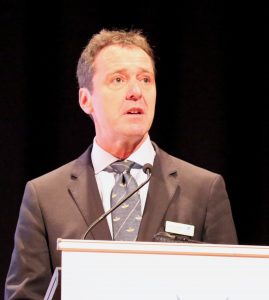 John Conway
John Conway
The presentation by MAGGEN Kahryn Toohey, head of Australian Army Development, underscored the importance of re-energizing the work of the ground forces in the evolving combat environment.
It is clear that the Aussie Army, like the US Marine Corps sees the importance of making EW effects available throughout the ground maneuver force. The question is how best to achieve this result.
And the presentation by Captain Steve Dryden, from the Royal Australian Navy, also emphasized the increased salience of focus and concern for the Navy with regard to information warfare issues.
Although he did not discuss this aspect, a key element shaping the way ahead for Navy contributions will clearly be radar technologies and their ability to communicate across the fleet and the ADF and to provide for a multi-mission information warfare functionality.
This will be enhanced as the new radars coming on line from CEA enter the fleet; and as the RAAF and the RAN work integration between Wedgetail and Air Warfare Destroyer among other dynamic innovations going forward.
The Army and the Navy have had specialized capabilities throughout their history, but the need now was to shape an integrated capability or as Lt. General (Retired) Davis put it a server available to the warfighter to pull down EW capabilities as appropriate to the fight.
The Department of Defence has formed a new department, the Information Warfare Division within the Joint Capabilities Group, which is standing up capabilities to shape interactive IW tools and approaches.
Brigadier Stephen Beaumont, Director General Information Warfare, Joint Capabilities Group, argued for the importance of shaping an enterprise wide EW system approach.
His perspective was encapsulated in the following slide:
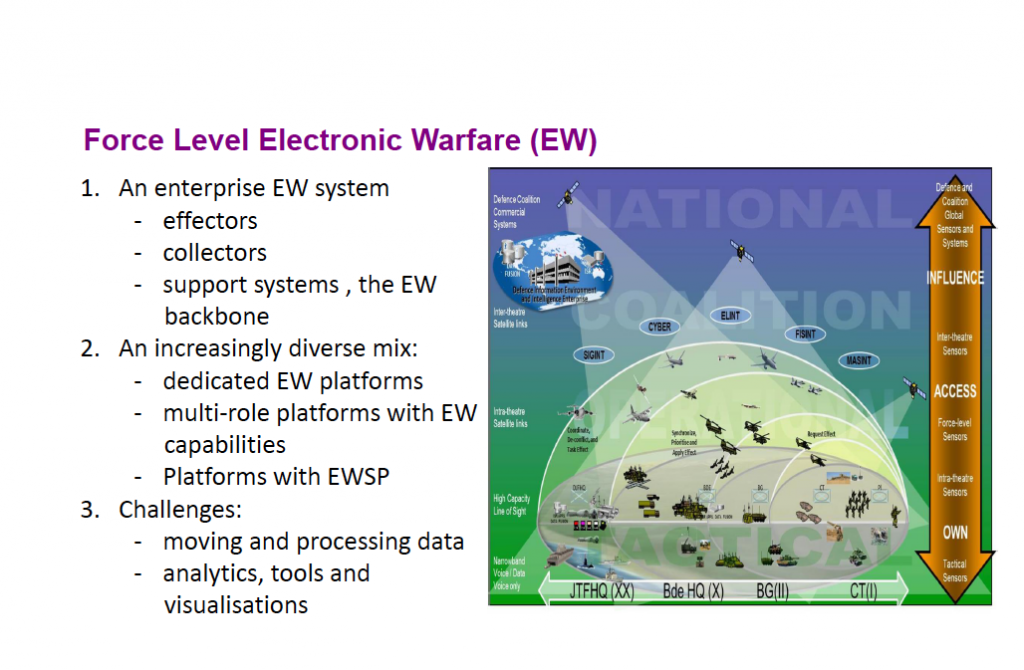
Indeed, one could view the importance of such an office to be a clearinghouse to inform the various players operating within government and the services of the activities of each other, as well as the technology capabilities available to them through the work of their compatriots operating throughout the ADF and government or among partners and allies.
This is such a dynamic and fluid area of development and operation that it is clear that open-ended learning is a core requirement for mission success.
The presentation by the Boeing representative focused on upgrades to Growler, which are necessary certainly to keep pace with the threats.
A key addition will be next generation jammer, which is designed to enhance the ability to handle multiple targets at once and to be supportive of the evolving air combat force.
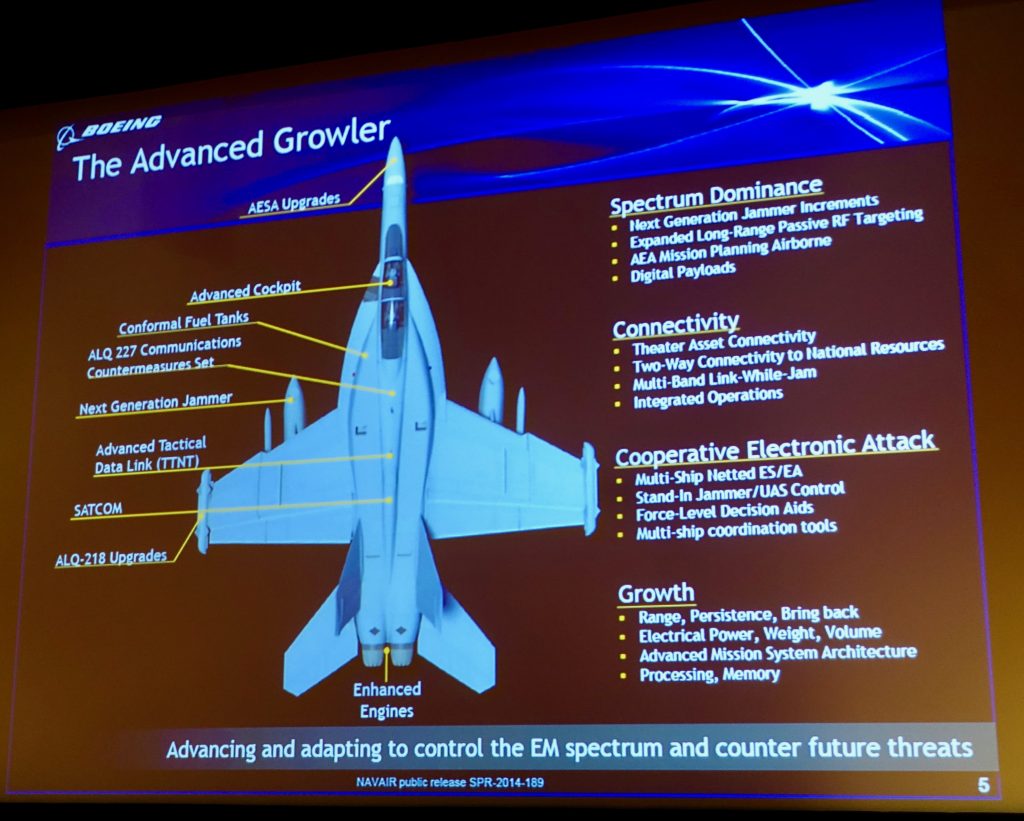
The presentation by Raytheon, the company building the next generation jammer, focused upon the need to shape a broader information warfare enterprise encompassing ISR, cyber and EW. To put into the words of the work we have shaped on Second Line of Defense, an enterprise that could support Tron Warfare.
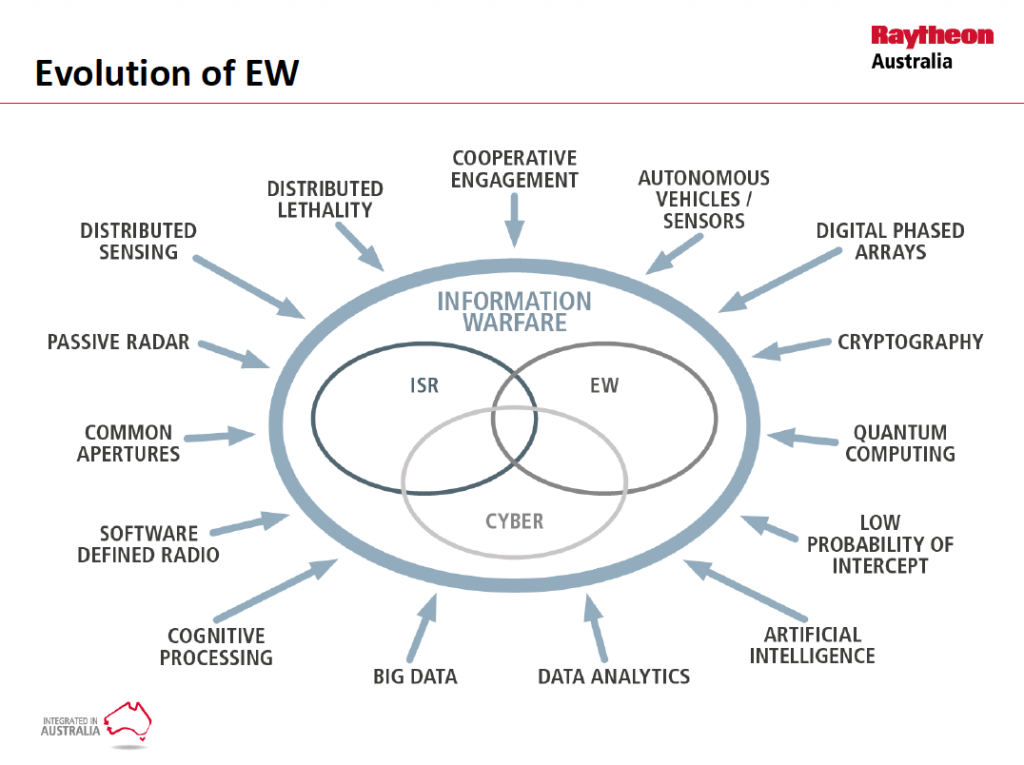
Finally, Jeffery McCreary from the Georgia Technology Research Institute provided a broad ranging overview on the evolution of technologies and how that would affect the EW domain, indeed transform it.
He focused on the importance of EW within the C2 or decision-making cycle, and the importance of disrupting the adversaries decision making cycle.
In order to do this, the force will need to rely more on artificial intelligence machine based contributions to enhance the blue side and disrupt the red side within the force equation.
And to do this, improvements needed to be made in terms of how warriors can act upon information, through new visual display technologies and other key ways to enhance the ability to gain strategic control over the flow of tactical information.
Within the evolving force structure, unmanned elements will be able to play a greater role within the man-machine interface to gain the upper hand in the electro magnetic spectrum.
The core objective is clearly decision-making superiority.
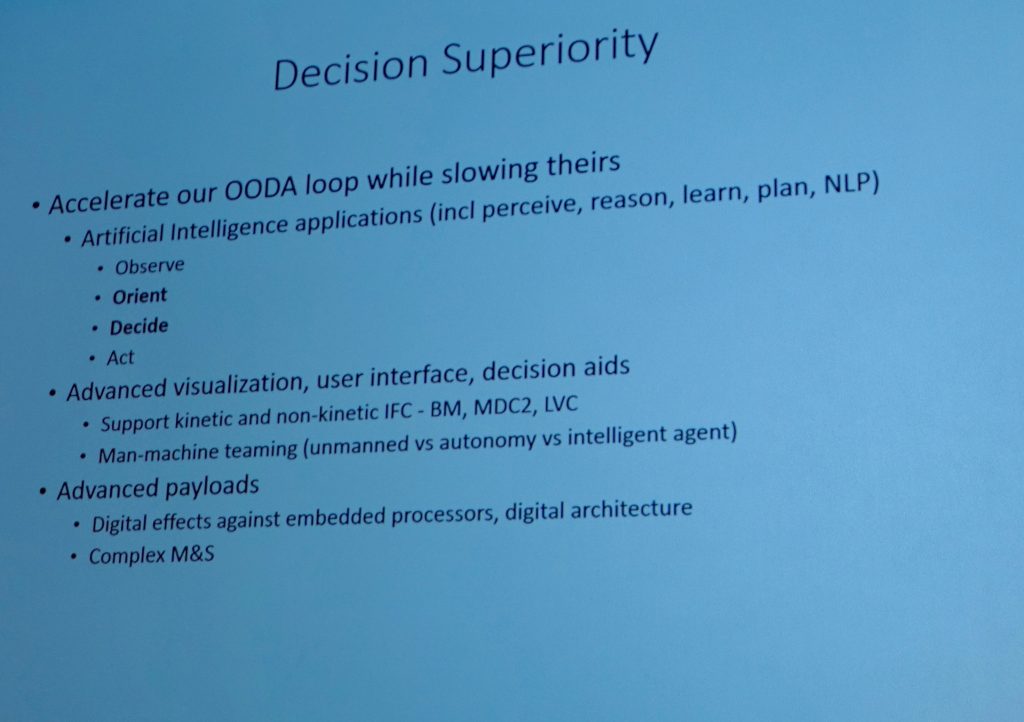
The goal is to accelerate blue side’s OODA loop while slowing red sides OODA loop.
The seminar organizer, John Conway, highlighted during the seminar and in talks after the seminar, the centrality of building EW into the operational art for the evolving combat force.
It is about reshaping the payloads, which can be delivered by the integrated force across the spectrum of warfare.
The introduction of the Growler is an important jump-start to Australian capabilities, but it comes into the force as the Aussies are working force integration hard.
In short, the seminar provided a case study of shaping a way ahead for broadening the capability, which the evolving 21st century combat force, can deliver.


